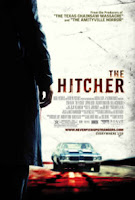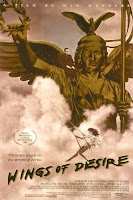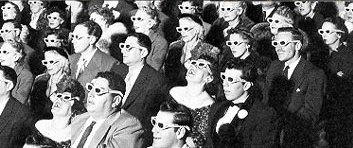 I just watched Charles Tait's The Story of the Kelly Gang, which I have discussed before as being the very first feature-length film made in the history of cinema. At 70 minutes the original film from 1906 was indeed the first long form film and was a full nine years before DW Griffith's pioneering (and extremely terrible by the way - have you seen that garbage?) The Birth of a Nation. Of course, all that's left is roughly 16 minutes worth of footage as the other three quarters of the film have either been lost or destroyed.
I just watched Charles Tait's The Story of the Kelly Gang, which I have discussed before as being the very first feature-length film made in the history of cinema. At 70 minutes the original film from 1906 was indeed the first long form film and was a full nine years before DW Griffith's pioneering (and extremely terrible by the way - have you seen that garbage?) The Birth of a Nation. Of course, all that's left is roughly 16 minutes worth of footage as the other three quarters of the film have either been lost or destroyed.
There are several sequences towards the end of the short remaining length that are clearly decomposing or what's known as nitrate damage due to the level of flammability in the original film stock (they retain the look of film being burnt on a projector), which is quite disappointing considering these marks are seen during the last stand of Ned Kelly and his outlaws, the scenes which feature the character of Ned in his famous helmet. These scenes are arguably the most fascinating and the ones of interest to most viewers, I imagine.

The film is, essentially, still easy to follow despite the plethora of missing scenes. Or, it is if you are familiar the story of Ned Kelly - a real life man who killed a bunch of policemen in the bush and robbed some others and then was hanged in the late 1880s. The study version found on the DVD, which expands upon the original 16 minutes of footage with the use of title cards like a traditional silent film is actually 30 minutes in total and is more easily followed with it's links and so forth between scenes and explaining the gaps.

It's disappointing that The Story of the Kelly Gang is never mentioned outside of Australian film discussion. This is the first feature-length film ever made yet because it's not American or French or whatever nobody even knows it exists for the most part. From what I can gather it was extremely wellmade for the times (remember: 1906). One bit I even found comical, when the bushranger Ned and his team hold up a household of people followed by the continual parade of passerbys. It's like "Why are there so many people going passed this house?"

One of the features of the DVD was you could listen to it without music, with a piano score or by Mauro Colombis or with an "experimental" musical score by Endorphin, which gives the film - strangely - a 1980s new wave soundtrack of sorts. The audio commentaries by Graham Shirley and Ian Christie are interesting if you like those sort of things (incredibly detailed history lessons).
All the images in this entry were screencaps that I took from the film to give you guys a look. You can view clips from the film over at Australian Screen Online.






No comments:
Post a Comment